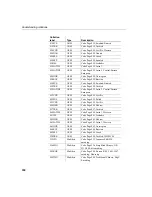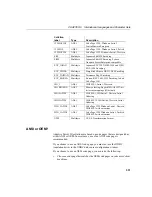
Understanding character sets in software
320
Remember that the code page used by the client system determines both the
values that are sent to server for each character you enter, and the characters
that are displayed when particular values are sent to the client from the server.
The code page used by the server system determines how the server interprets
values the client sends.
ANSI and OEM code pages in Windows and Windows NT
For Microsoft Windows and Windows NT users, the issue is complicated
because there are at least two code pages in use on most PCs. This issue affects
both Windows and NT clients and NT servers.
MS-DOS, as well as character-mode applications (those using the console or
"DOS box") in Windows 95/98 and Windows NT, use code pages taken from
the IBM set. These are called OEM code pages (Original Equipment
Manufacturer) for historical reasons.
Windows operating systems do not require the line drawing characters that
were held in the extended characters of the OEM code pages, so they use a
different set of code pages. These pages are based on the ANSI standard and
are therefore commonly called ANSI code pages.
Adaptive Server IQ supports collations based on both OEM and ANSI code
pages.
Example
Consider the following situation:
•
A PC is running the Windows 98 operating system with ANSI code page
1252.
•
The code page for character-mode applications is OEM code page 437.
•
Text is held in a database created using the collation corresponding to
OEM code page 850.
An uppercase A grave in the database is stored as character 183. This value is
displayed as a graphical character in a character-mode application. The same
character is displayed as a dot in a Windows application.
For information about choosing a single-byte collation for your database, see
“Understanding collations” on page 328.
Summary of Contents for Adaptive Server IQ 12.4.2
Page 1: ...Administration and Performance Guide Adaptive Server IQ 12 4 2 ...
Page 16: ...xvi ...
Page 20: ...Related documents xx ...
Page 40: ...Compatibility with earlier versions 20 ...
Page 118: ...Troubleshooting startup shutdown and connections 98 ...
Page 248: ...Importing data by replication 228 ...
Page 306: ...Integrity rules in the system tables 286 ...
Page 334: ...Cursors in transactions 314 ...
Page 396: ...Users and permissions in the system tables 376 ...
Page 438: ...Determining your data backup and recovery strategy 418 ...
Page 484: ...Network performance 464 ...
Page 500: ...System utilities to monitor CPU use 480 ...
Page 514: ...Characteristics of Open Client and jConnect connections 494 ...
Page 536: ...Index 516 ...
















































